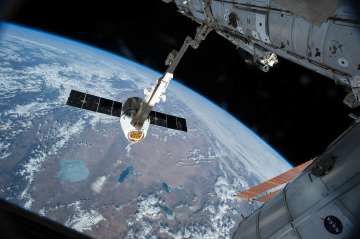SpaceX’s spacecraft Dragon has successfully splashed down into the Pacific Ocean on Friday just off Mexico’s Baja California coast.
After successfully delivering almost 2,268 kgs of supplies and scientific cargo on its ninth resupply mission to the International Space Station, Dragon cargo splashed down with more than 1,360 kgs of crucial research samples from the orbiting laboratory, NASA said on Saturday.
Among the experiment samples returning are those from the Heart Cells study, which is looking at how microgravity affects human heart cells.
The US National Laboratory is studying how microgravity changes the human heart, and how those changes vary between individuals.
Deep space missions including the journey to Mars will require long periods of space travel, which creates increased risk of health problems such as muscle atrophy, including possible atrophy of the heart muscle.
Heart cells cultured aboard the space station for one month will be analysed for cellular and molecular changes. Results could advance the study of heart disease and the development of drugs and cell replacement therapy.
Dragon is currently the only space station resupply spacecraft able to return a significant amount of cargo to Earth, NASA said.
The spacecraft lifted off from Cape Canaveral Air Force Station in Florida on July 18 carrying almost 2,268 kgs of supplies and scientific cargo.
When it arrived at the station July 20, Dragon delivered the first of two international docking adapters (IDAs) in its external cargo hold, or "trunk."
The international docking adapters will be used by commercial spacecraft now in development for transporting astronauts to the station as part of NASA's Commercial Crew Programme.
The initial adapter was installed during an August 19 spacewalk by Expedition 48 Commander Jeff Williams and Flight Engineer Kate Rubins of NASA.
The second adapter is being built and will be delivered on a future Dragon cargo resupply mission, NASA said.
(With inputs from IANS)
